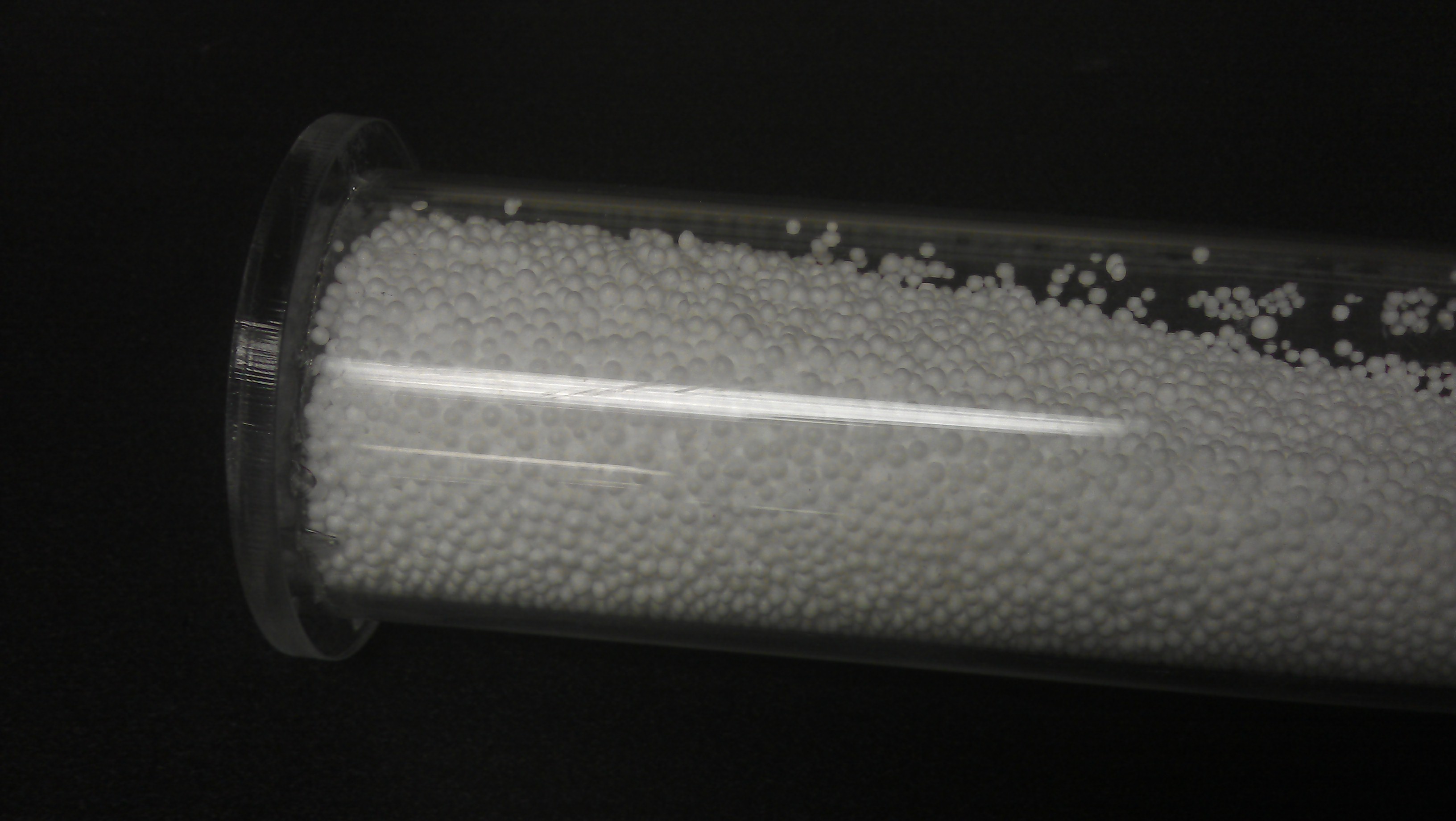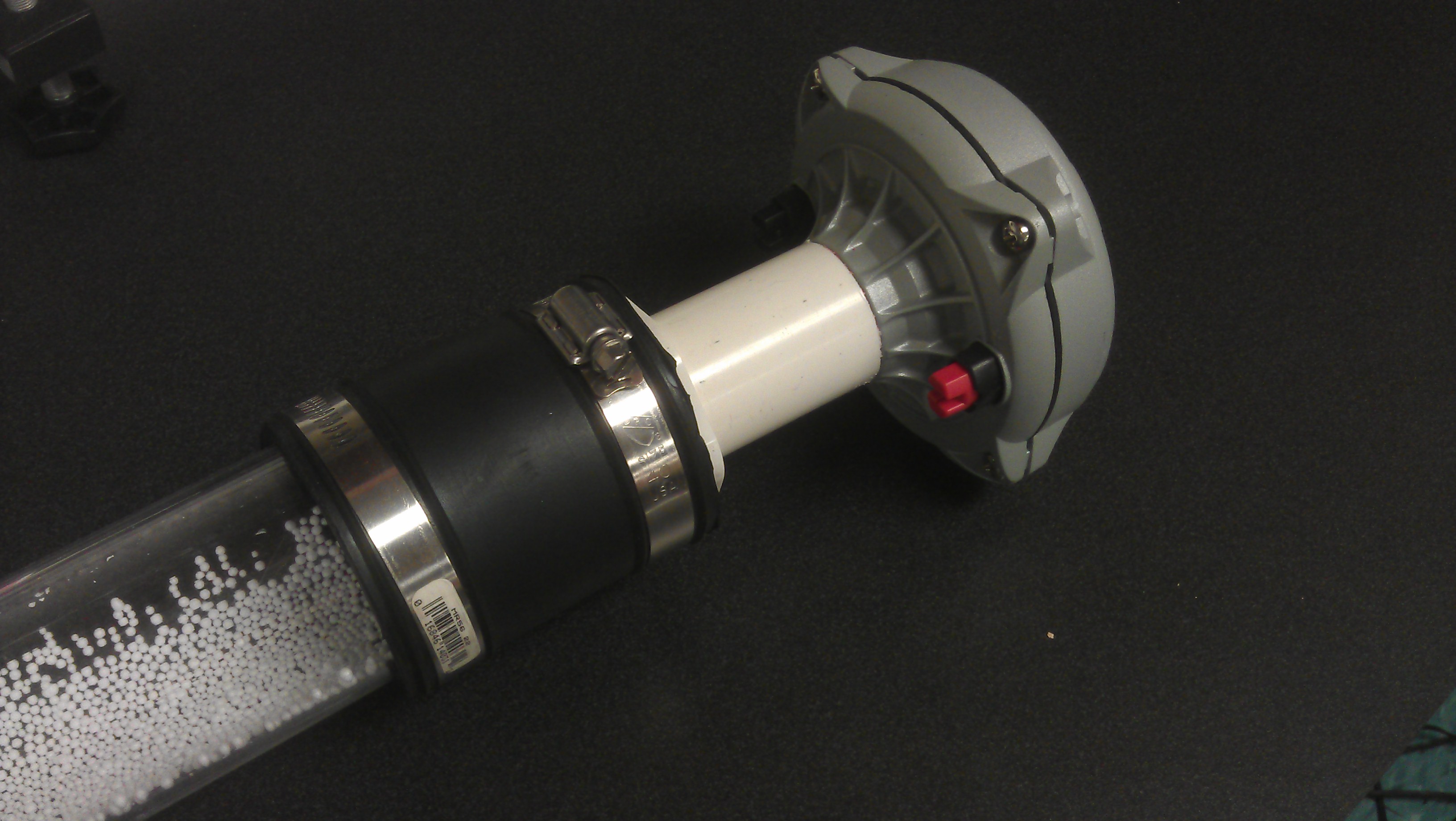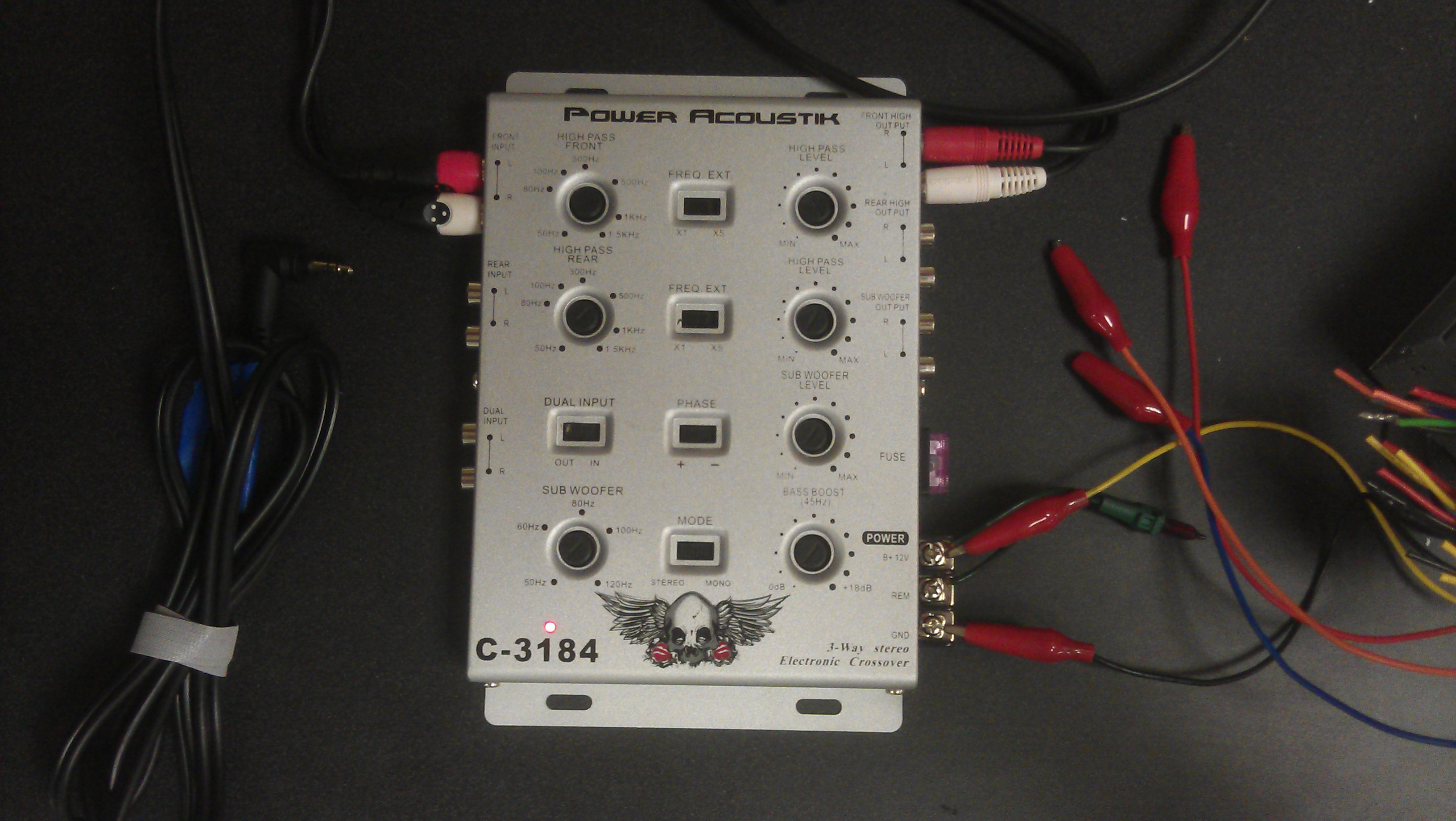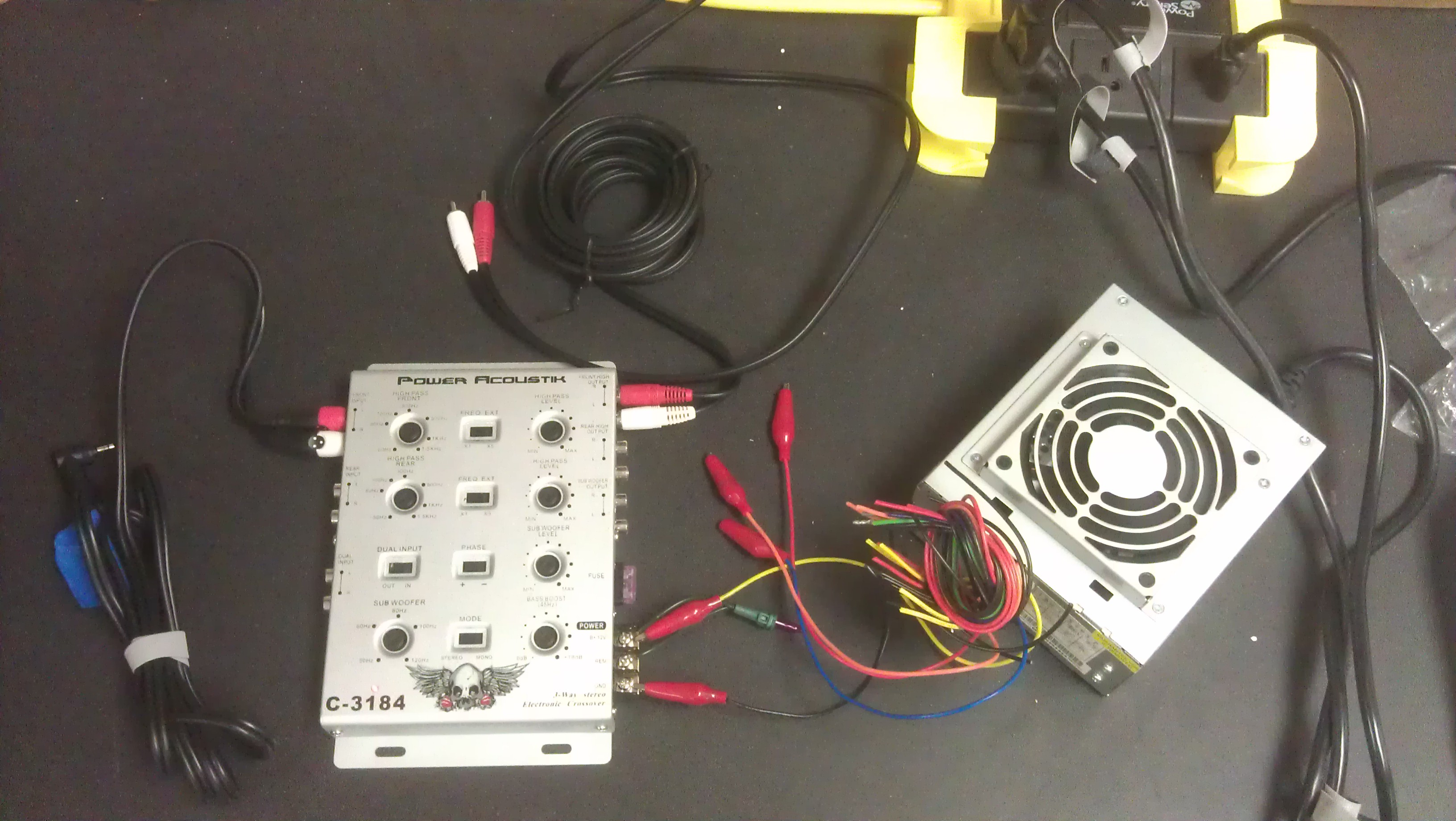Watch the video to see what's going on.
The acrylic tube is 72 inches long x 2 1/2 inch (outside diameter). I bought mine at Tap Plastic, but you can get it online. The beads are expanded polystyrene (one brand is Styrofoam) for bean bag chairs. The minimum order from Tap Plastic was three cubic feet. You need a lot less, so if you live in the Bay Area, I'm happy to give you some.
I used plastic glue to finish the end away from the speaker.

Connecting the speaker to the tube in an airtight way was a challenge. The threads on the horn driver are different than those on PVC. Grr. Instead I made my own piece. I cut a short length of 1 1/4 inch PVC. I melted some InstaMorph in the microwave and put it inside the PVC. InstaMorph sticks to PVC and before it hardened, I screwed the driver on. Presto! A piece of PVC with the right threads. You don't have to be this elaborate though, it will still work with the PVC pipe just pushed into the threads of the driver.
The other side of the pipe is connected to a PVC 2" x 1.25" reducer bushing. Then I used a rubber pipe coupling to connect between the arcylic tubing to the PVC.
 Driver plus PVC connector
Driver plus PVC connector
You need a lot of amplitude (air motion) to move the beads. I use a horn driver since they are small and can fit into the tube. The horn driver is a Selenium D 250-X that I got from Parts Express for about $40. It is rated at 250 W at 1000 Hz and higher and 150 W at 500 Hz to 1000 Hz.
That last bit is important. As the frequency goes down the amount of power that the driver can handle goes down. Too much power will melt the wires in the driver, and it will stop working.
 Burned out. Smells bad too. A nice thing about the Selenium drivers is that Parts Express sells replacements.
Burned out. Smells bad too. A nice thing about the Selenium drivers is that Parts Express sells replacements.
The key then is to get rid of any low freqencies from the signal, otherwise you'll melt the driver. For this, I used an electronic crossover which allows some frequencies through and blocks others. I used the Power Acoustik C3184 which has a variable crossover, and I set it to reject frequencies below 600 Hz. Makes the songs sound tinny but allows me to pump up the volume.
 Variable crossover
Variable crossover
The only problem with this crossover is that it is designed for a car which means that it wants 12 V power. I just use an old computer power supply but you can buy adapters. Instructables has lots of projects that turn computer power supplies into useful bench top supplies.
 Computer power supply gives 12 V
Computer power supply gives 12 V
Picking the right song can be a challenge. I found that songs that lots of mid and high frequencies work well, and songs with long sustains seem to work better.